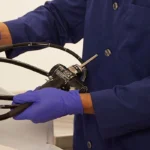Hospital administrative tasks are necessary and important, but they place extra strain on staff across the facility. Reduce the burden to improve patient care.
Administrative Burdens: A System-wide Struggle
Some kids dream of becoming a doctor or nurse. None, presumably, fantasize about growing up to work on the administrative-related tasks that come with the job. Yet, clinicians and hospital administrators in the U.S. who chose healing for a career spend a significant amount of their time — and their hospital’s money — ensuring compliance with 629 discrete regulations imposed by just four agencies. Of course, there are many other regulatory bodies that health care providers must also comply with.
According to a 2017 AHA study, U.S. hospitals collectively will spend $39B managing compliance this year, which equates to $7.6M for an average hospital (161 beds) or $1,200 per admitted patient. In addition to cost, regulatory responsibilities can cut deeply into face time with patients. The same 161-bed hospital will dedicate 59 FTEs to compliance-related tasks over the course of the year. If your hospital falls into the post-acute care (PAC) facility, you must comply with an additional 288 regulations.
When you factor in other administrative responsibilities, such as managing and coordinating vendors, parts procurement, equipment management, service documentation, and more, the total burden on clinicians and other hospital staff can be acutely felt on a day-to-day basis.
This reality presents two challenges for hospitals.
The first is cost. The financial burden of managing compliance and other administrative tasks can make it nearly impossible for hospitals to achieve meaningful cost reductions. In fact, a study published in 2014 reveals that 25% of health care costs are administrative. At a time when margins rarely climb above 4% — and are often in the red – this reality can heighten the pressure on hospitals to turn to cost-cutting measures instead of re-investing in promising growth initiatives.
The second challenge is true productivity on the part of clinicians, biomed techs, and other hospital staff. While physicians and nurses agree accountability is important, many believe the regulatory requirements have become detached from the realities of patient care and only complicate the process. They find themselves spending more time pushing paper and less time interacting with patients. Administrative work is not what most clinicians aspired to when they chose health care as a career.
The same impact is felt by many biomed teams, as evolving regulatory standards have increased the service and documentation requirements for today’s more sophisticated technology. Coupled with an equipment inventory that has doubled over the past twenty years, many biomedical teams spend a disproportional amount of time focused on unproductive or administrative service tasks related to their lower-end equipment. Instead of helping their hospital navigate the challenges of new technology or gaining more value out of their higher-end devices, biomed techs spend their time either tracking down equipment or documenting service on every device.
Lifting Burdens for Improved Patient Care
Solving this problem isn’t easy. Many of the regulations have helped to drive accountability and ensure that a hospital’s environment delivers high-quality patient outcomes. Even if regulations were somehow rolled back or decreased, it could take years. The biggest challenge is time. However, you can’t solve the problem of time just by working harder or faster or more efficiently. In general, most hospital staff are already maxed-out. There are no corners left to cut.
Effectively solving the problem of overbearing administrative tasks requires a new approach — rethinking who manages various internal processes and finding ways to free clinicians to spend more time with patients and less time with paper. One way to do that is to eliminate the burden of managing medical equipment.
A hospital’s medical equipment inventory can be a significant source of waste that impacts multiple departments from clinical engineering and supply chain to nursing. From the time spent searching for and cleaning equipment to the time spent documenting service on every single device, hospital staff can find their shift filled with administrative tasks related to their medical devices.
However, some hospitals see this as an area of opportunity, and they have started looking at how medical equipment management impacts the entire facility. Many have begun to outsource components of their medical equipment management process to reduce the burden on their nurses, biomed departments, and even supply chain teams.
By establishing an end-to-end approach to medical equipment management, hospitals can eliminate some of the most time-consuming administrative tasks – and even some of the compliance components. Ultimately, this enables clinicians to spend more time with patients, biomed staff can focus on higher-value work, supply chain teams can make more proactive purchase decisions, and hospitals can reduce some of their spend on compliance and administrative tasks.
Watch this video to learn how Agiliti can help.
Visit our Resource Center to discover more, or learn more about Equipment Value Management.









